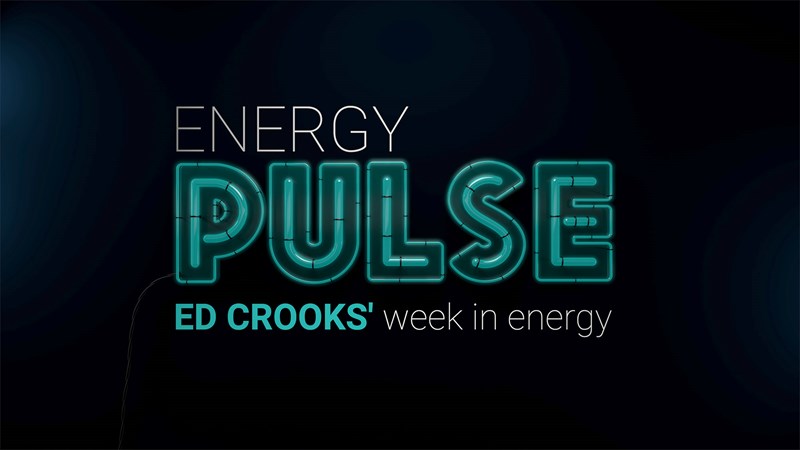Oil supply cuts explained: an interview with the US energy secretary
After the historic OPEC+ agreement to cut production, Dan Brouillette explained the US role in the talks and its view of the oil market
1 minute read
Ed Crooks
Vice Chair Americas and host of Energy Gang podcast

Ed Crooks
Vice Chair Americas and host of Energy Gang podcast
Ed examines the forces shaping the energy industry globally.
Latest articles by Ed
-
Opinion
The Big Beautiful Bill is close to passing
-
Opinion
Ceasefire in the Israel-Iran conflict
-
Opinion
The impact of the Israel-Iran conflict escalation on the global energy market
-
Opinion
EBOS: the unsung hero that’s accelerating clean energy deployment
-
Opinion
What the US attack on Iran’s nuclear installations means for energy
-
Opinion
How do we adapt to a warming world?
OPEC has held some momentous meetings in its 60-year history, but not many have been as difficult as the four days of talks that on Sunday finally resulted in an agreement to cut production. After a teleconference, the cartel and its allies in the OPEC+ group, including Russia and Mexico, announced they would be cutting production by 9.7 million barrels per day (b/d) in May and June, 7.7 million b/d for another six months, and then by 5.8 million b/d for a further 16 months. It is the largest reduction in output cut since OPEC was founded.
Along with market-driven cuts in production in other countries, and additions to strategic reserves, a total of up to 20 million b/d could be taken off the market, the US administration believes. The International Energy Agency is expected to discuss those additions to reserves when it launches its April Oil Market Report on Wednesday.
Ann-Louise Hittle, Wood Mackenzie’s head of Macro Oils, said that even if compliance with the OPEC+ deal was not perfect, it was still a substantial agreement that would have “a big – and swift – impact on supply and demand fundamentals, especially in the second half of 2020”.
Supposing 75% compliance, which would be low compared to the levels achieved for OPEC+ agreements in recent years, the deal would result in about 1.5 billion barrels that would otherwise have been produced this year being left in the ground. With constraints for worldwide storage capacity looming, the agreement will ease the pressure on physical markets that could have exacerbated price falls and shut-ins.
US President Donald Trump was closely involved in the talks that led up to the deal, speaking to King Salman of Saudi Arabia, President Vladimir Putin of Russia and Mexico’s president Andrés Manuel López Obrador, who was the principal holdout against an agreement. I spoke to Dan Brouillette, the US energy secretary, about the administration’s hopes for the deal, the outlook for the oil industry, and the administration’s role in brokering an agreement. The conversation has been edited for clarity.
EC: What role did the US play in encouraging the OPEC+ group to reach a deal?
DB: We have been engaged with our colleagues all around the world for the past 30 days or so. We were able to suggest that: “Look, if you want access to this economy in the future, we’re going to have a rational conversation about the proper level of production, given the world’s focus on this global pandemic of Covid-19. You are damaging a very important industry, not only for yourself, but for the United States and for other energy producers around the world. If these wells begin to be shut in and we lose the ability to produce, this industry will not be here for us on the other side of this pandemic.”
EC: What was President Trump’s personal involvement?
DB: He spent a lot of time over the weekend talking to these folks. And it wasn’t only this weekend: it was all through the week. As we [energy ministers] tried to do as much as we could to close the sale, it became apparent that some were not going to agree within the context of OPEC to whatever cuts they were being asked to provide. So it was going to move to a head of state situation pretty quickly.
Last Thursday we realised it was going to have to be elevated, and the president got on the phone with the president of Mexico, the president of Russia and the king of Saudi Arabia. He held joint virtual meetings with those three. He really engaged aggressively, because he understands that it’s important for us to protect the US industry. It was an extraordinarily complicated deal. These are big personalities, there are big consequences here, and the president’s skill set is perfectly suited for that type of deal.
EC: When Mexico was holding out against a 400,000 b/d cut in production, there was a suggestion that the US had agreed to take most of that reduction. What happened there?
DB: The president said: “Look, this is silly. The dispute is really between Russia and Saudi Arabia. And we can’t hold this up over some smaller number that’s being produced in Mexico. We’re not going to let you use Mexico as a scapegoat.” And he said the cuts by the market in the United States are just going to dwarf anything that you would ask Mexico to do. So in that sense, it became clear to the people round the table that we were willing to make some really strong arguments to close what was really a dispute between Saudi Arabia and Russia. And that argument won the day.
EC: When you discussed access to the US economy, did that include threatening to impose tariffs on imported oil?
DB: The president said every option is on the table. But there are many more options than just tariffs or import restrictions. This is the best economy in the world to invest in, and Saudi Arabia certainly has made enormous investments here. But you can’t take that for granted, and I think that’s something that came through. We must balance our interests here. We want a strong energy industry, we want a good cordial relationship, we want a fair and balanced trade relationship. And all these things come into play.
EC: You talk about wanting to be sure that the industry will still be there on the other side of the crisis. What is the real threat that it faces?
DB: Some of these wells, once they shut in, they’re not coming back. And if they don’t come back, then you’re dealing with the loss of production, obviously, and potentially you start to lose jobs at an incredibly fast pace. This industry supports 11 million jobs in the United States. And once you start to have this systemic effect, you lose the production, the rigs lay down on the front end, the service industry feels the next wave of the lay-offs, it continues throughout the entire system. It is very difficult to rebuild that. And I think every player in these conversations over the past 30 or so days understands that, and was there to ensure that this important part of their economies survives this pandemic.
EC: Some of the commentary has suggested that this agreement does not cut production enough to rebalance the market. Brent crude has been steady at about US$32 a barrel since the final deal was reached, while WTI is about US$23/b. How much is this really going to help?
DB: What if we had done nothing? That is the obvious alternative and I think, relative to that, this is going to help a lot. We can debate all day long whether 10 [million b/d] is the right number for OPEC, and whether the market-driven economies are going to reduce another 3.7 million or 4 million or 5 million [b/d]. Who knows? It depends when you turn the demand cycle back on. If we get past this pandemic faster than people expect, and we’re able to restart these economies in a very aggressive way, then 10 million from OPEC and another three or four or five [million] from the non-OPEC is going to look huge. And there may be some revisiting of these numbers. I saw a couple of folks on the news who are in the business, and they said: “I think they need to do more”. My immediate response to that is well, you can close your company today and help that situation. Stop your production altogether if you want to. If you are waiting for a government signal, I think you are waiting for the wrong thing.
EC: Does that mean you don’t support government intervention to compel production cuts in the US?
DB: I think there are going to be market-driven reductions. I don’t think you’re going to see any federal mandates to halt production anywhere across the government.
EC: You have suggested the full amount of supply coming off the market could be close to 20 million b/d. How do you get to that from the 9.7 million b/d cut announced by the OPEC+ group?
DB: The math is somewhat easy. There are over 100 countries that produce oil today. With no market, there is no place for that oil to go, and that production is going to slow down. If you add it up, and add up the numbers that Fatih Birol [executive director of the International Energy Agency] was talking about being put into storage, and take that off the market, 20 [million b/d] is a realistic number.
EC: Even now, the outlook for the US oil industry is challenging. Rigs are being laid down, jobs are being lost, companies are cutting spending. What is your message to US producers facing an uncertain future?
DB: I’m an optimist by nature. I would remain optimistic that we’re going to see the economy reopen very soon. And when it does, the return is going to be very aggressive, meaning we’re going to see a big demand curve coming. So my point would be: avail yourself of the opportunities that Congress has created with regard to the CARES Act, take advantage of the tax provisions that are there to help provide liquidity and keep these companies intact, and hang on for a hell of a ride. Because when the economy comes back, it’s going to come back stronger than ever.
How to get Energy Pulse
Energy Pulse is Ed Crooks' weekly column, published by Wood Mackenzie every Friday. Here's how to get Energy Pulse:
- Follow us on social media @WoodMackenzie on Twitter or Wood Mackenzie on LinkedIn
- Fill in the form at the top of this page and we'll send you an email when the latest issue goes live
- Bookmark this page to have access to the full archive of Energy Pulse








